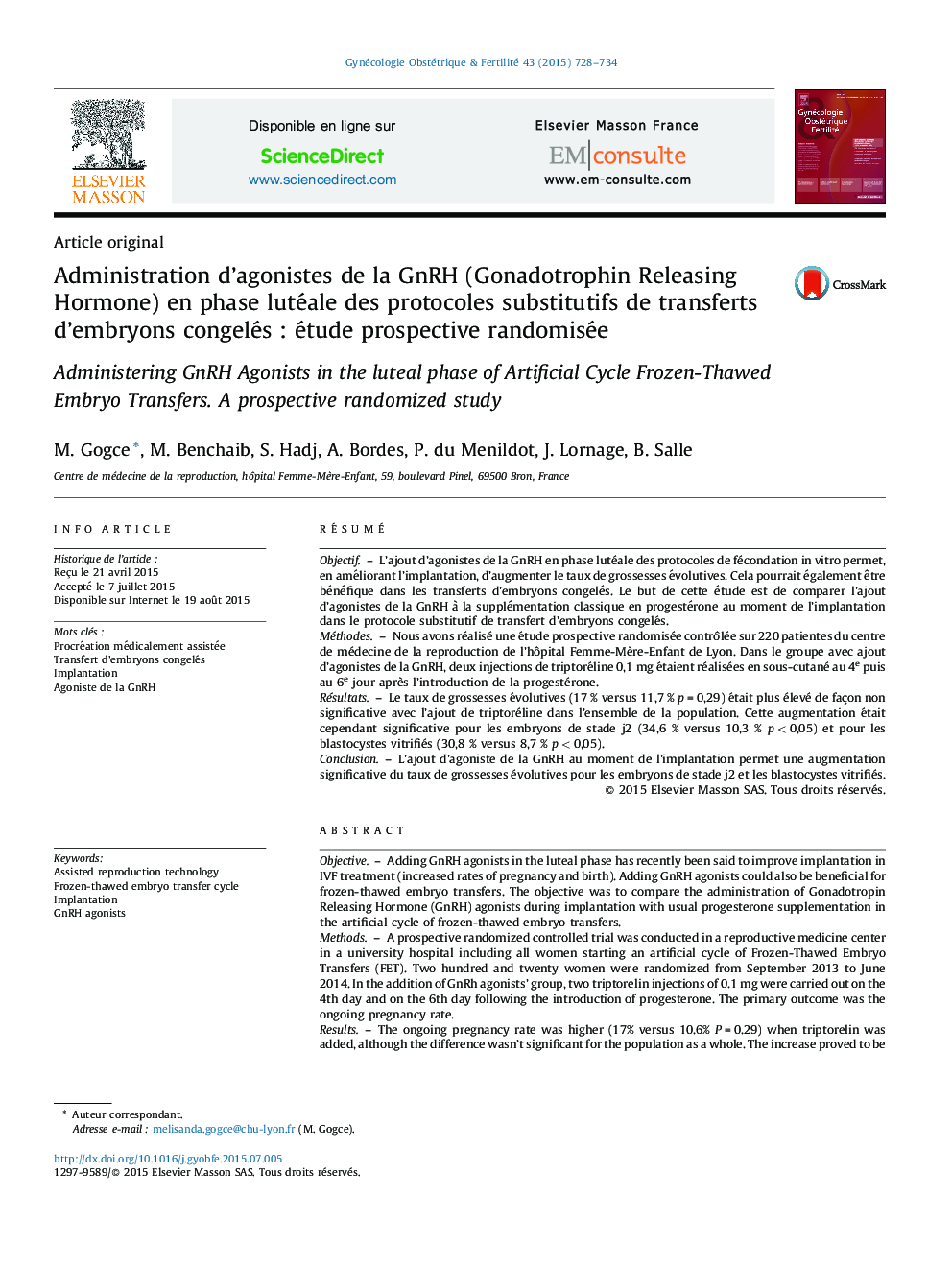| Article ID | Journal | Published Year | Pages | File Type |
|---|---|---|---|---|
| 3951291 | Gynécologie Obstétrique & Fertilité | 2015 | 7 Pages |
RésuméObjectifL’ajout d’agonistes de la GnRH en phase lutéale des protocoles de fécondation in vitro permet, en améliorant l’implantation, d’augmenter le taux de grossesses évolutives. Cela pourrait également être bénéfique dans les transferts d’embryons congelés. Le but de cette étude est de comparer l’ajout d’agonistes de la GnRH à la supplémentation classique en progestérone au moment de l’implantation dans le protocole substitutif de transfert d’embryons congelés.MéthodesNous avons réalisé une étude prospective randomisée contrôlée sur 220 patientes du centre de médecine de la reproduction de l’hôpital Femme-Mère-Enfant de Lyon. Dans le groupe avec ajout d’agonistes de la GnRH, deux injections de triptoréline 0,1 mg étaient réalisées en sous-cutané au 4e puis au 6e jour après l’introduction de la progestérone.RésultatsLe taux de grossesses évolutives (17 % versus 11,7 % p = 0,29) était plus élevé de façon non significative avec l’ajout de triptoréline dans l’ensemble de la population. Cette augmentation était cependant significative pour les embryons de stade j2 (34,6 % versus 10,3 % p < 0,05) et pour les blastocystes vitrifiés (30,8 % versus 8,7 % p < 0,05).ConclusionL’ajout d’agoniste de la GnRH au moment de l’implantation permet une augmentation significative du taux de grossesses évolutives pour les embryons de stade j2 et les blastocystes vitrifiés.
ObjectiveAdding GnRH agonists in the luteal phase has recently been said to improve implantation in IVF treatment (increased rates of pregnancy and birth). Adding GnRH agonists could also be beneficial for frozen-thawed embryo transfers. The objective was to compare the administration of Gonadotropin Releasing Hormone (GnRH) agonists during implantation with usual progesterone supplementation in the artificial cycle of frozen-thawed embryo transfers.MethodsA prospective randomized controlled trial was conducted in a reproductive medicine center in a university hospital including all women starting an artificial cycle of Frozen-Thawed Embryo Transfers (FET). Two hundred and twenty women were randomized from September 2013 to June 2014. In the addition of GnRh agonists’ group, two triptorelin injections of 0.1 mg were carried out on the 4th day and on the 6th day following the introduction of progesterone. The primary outcome was the ongoing pregnancy rate.ResultsThe ongoing pregnancy rate was higher (17 % versus 10.6 % P = 0.29) when triptorelin was added, although the difference wasn’t significant for the population as a whole. The increase proved to be significant in the case of day 2 embryos (34.6 % versus 10.3 % P < 0.05) and of vitrified blastocysts (33.3% versus 12.5% P < 0.05).ConclusionThe ongoing pregnancy rate for day 2 embryos and vitrified blastocysts significantly increased when GnRH agonists were added during implantation.
